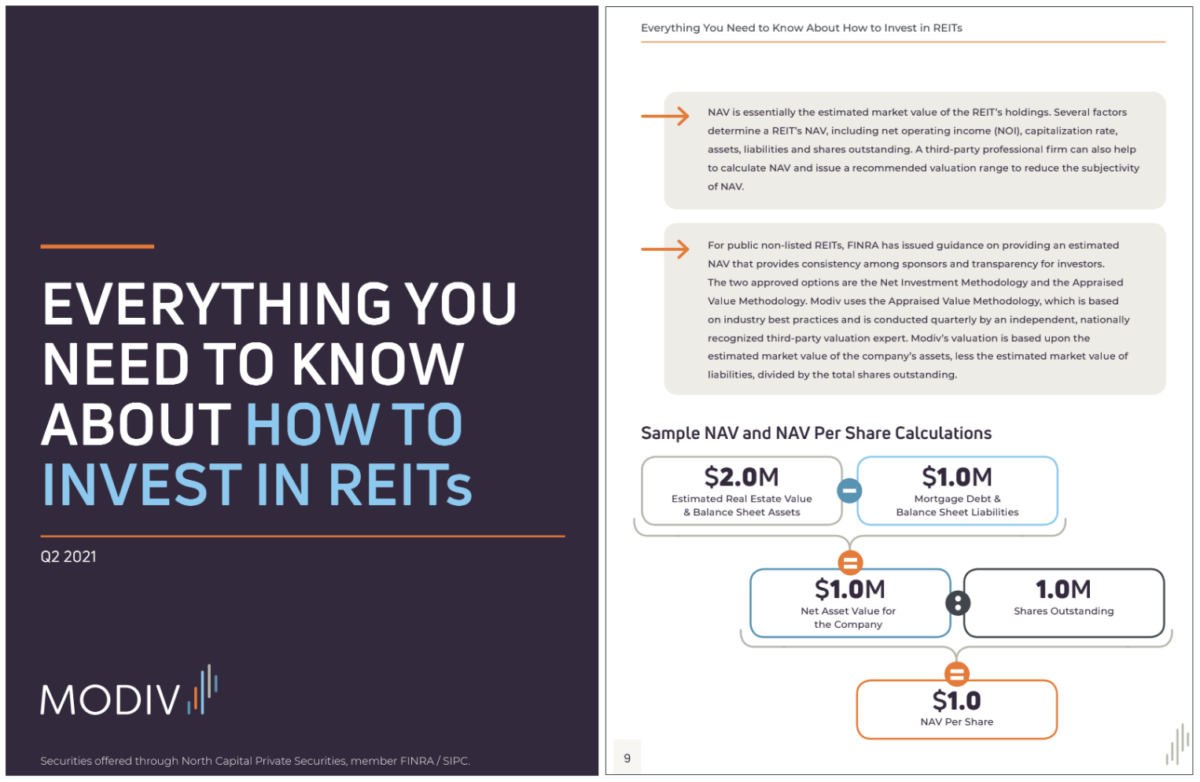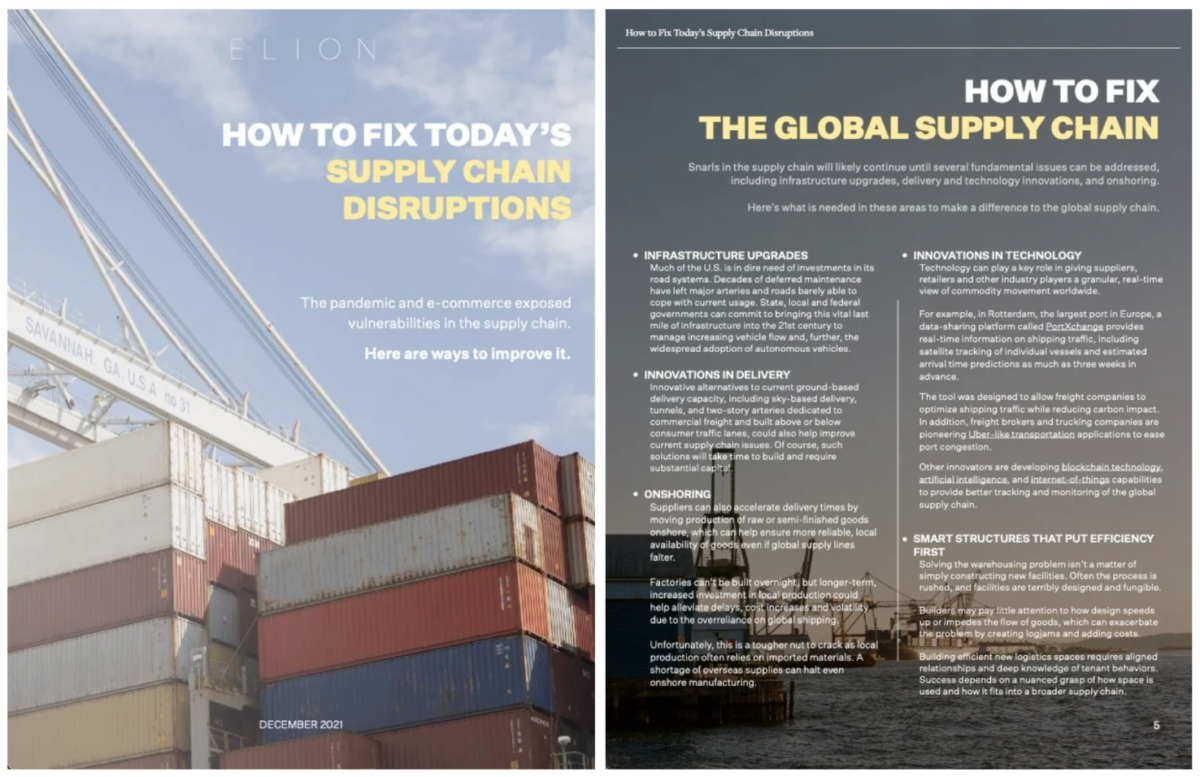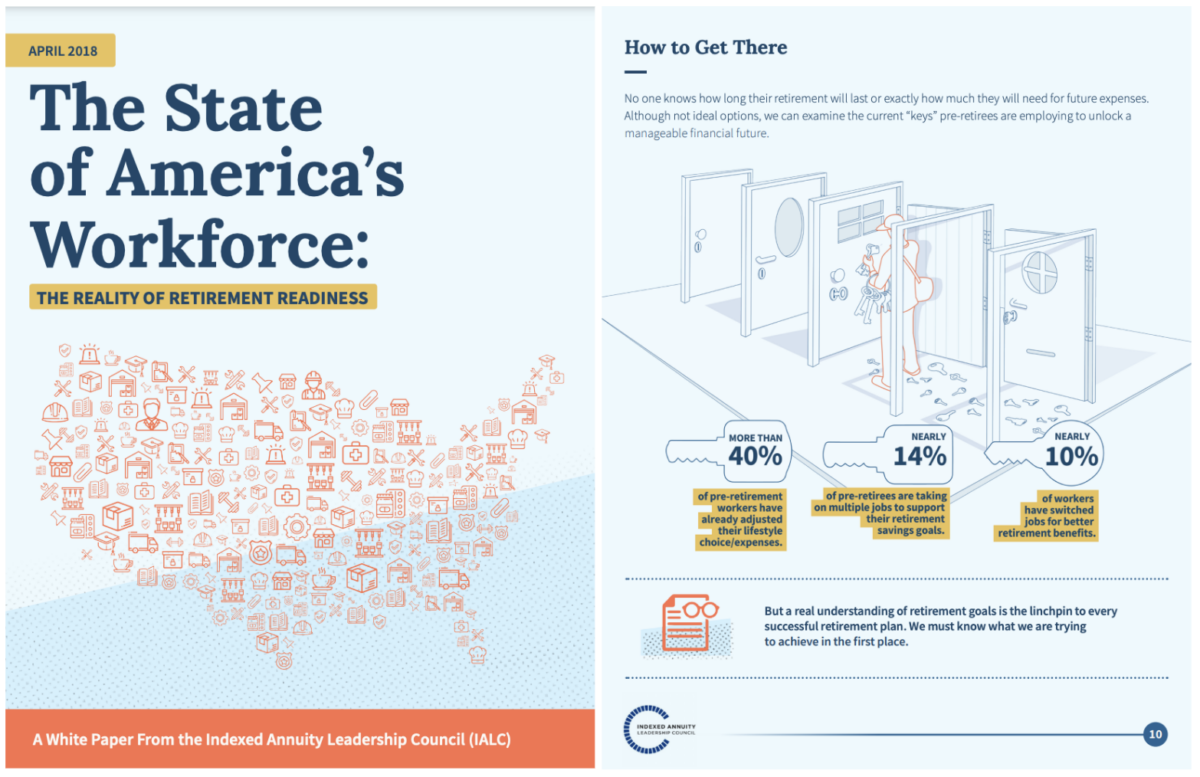Financial services white papers: A comprehensive guide
We’ve all heard attention spans are on the decline, but this factoid is almost universally misunderstood by marketers. It’s not the shortening of attention that caused a shift in consumer behavior, but the proliferation of options where we can spend our attention.
When it comes to financial services, real estate, retirement planning, and substantial sums of money people have worked a lifetime to accumulate, convincing anyone to make a five- or six-figure investment based on one-minute TikTok videos alone would be inadvisable, to say the least.
As sales environments are increasingly digital, nearly 57% of the buying process is completed by your soon-to-be-customer before even booking a first meeting with the sales rep. (Accenture) This means the information customers want to see about you, your company, product, or service, not only has to be good but also comprehensive.
In the realm of financial services, white papers can be an invaluable tool for educating potential clients, shaping industry dialogue, and positioning brands as thought leaders.
These documents can not only inform but also influence decision-making, serving as a bridge between financial brands and their target audiences.
Part 1: Ideating and positioning your white paper
Understanding your audience’s needs
You aren’t writing for your peers, so keep the white paper’s purpose clear: helping future customers grasp certain realities and address common questions and misconceptions about your solution.
Identifying the specific challenges and questions your audience faces is a great place to start.
Conduct surveys or 1:1 interviews with your sales team and current clients to uncover their primary concerns and especially misconceptions about financial services. This direct feedback will guide the focus of your white paper, ensuring it addresses the most pertinent issues to your audience.
Crafting a strong thesis
A well-defined thesis acts as the cornerstone of your white paper.
You can start with a problem statement that resonates with your target audience, then draft a thesis that proposes your unique solution or perspective.
Refine this thesis through a second, facilitated team discussion to ensure it’s both compelling and achievable, setting a solid foundation for your white paper.
Developing a unique angle
To differentiate your white paper in a saturated market, holding brainstorming sessions focused on untapped topics or novel perspectives can be incredibly fruitful.
Gather your team for a creative workshop to identify gaps in the existing conversation where your brand can contribute new insights or solutions. This process helps in carving out a distinctive niche for your content.
Pro tip: Navigating messaging sessions as an internal exercise can be difficult. Consider hiring a marketing session facilitator for maximum productivity.
Part 2: Writing process best practices and strategies
Research fundamentals
Effective research is the backbone of any insightful white paper. Compiling a list of reputable sources, including academic journals, industry reports, and expert interviews can be helpful, but you will often discover sources as you write. Don’t lose them! This curated list will serve as the basis for a thorough investigation into the topic, ensuring your white paper is both authoritative and informative.
We’ll have more to share about sources and compliance issues in Section 4.
Structuring your content
Creating a detailed outline is crucial for maintaining a logical flow of information. Begin by mapping out the main sections of your white paper, including the introduction, problem statement, thesis, supporting arguments, and conclusion.
This outline should serve as a blueprint, guiding the writing process and ensuring all critical points are covered. If you’re not writing it yourself, make sure to give writers a thorough creative brief with a solid background, audience profile, links to resources, and a thorough outline.
Writing clearly and persuasively
Writing is a skill. Add in the complexity of financial concepts and compliance to that baseline, and you’ve got an even smaller talent pool.
Even with the rise of AI tools, like ChatGPT financial writing still requires human oversight and talented editors with financial services background to ensure your content is compelling and compliant once the robots have done their part.
We asked ChatGPT why it was a bad idea to rely on AI to write complex financial content.
Here’s what it said.
Revising and refining
Revision is key to polishing your white paper. Schedule multiple review cycles, focusing first on content accuracy and coherence, then on language and persuasiveness.
Utilize tools like Grammarly for grammar and style checks, and consider professional editing services to elevate the quality of your document.
Part 3: Designing your financial white paper for maximum impact
Visual enhancements
Visual elements like charts and infographics not only break up text but also make complex data understandable.
If you’re not a graphic designer, don’t start now. Design is an essential element of the overall selling argument or presentation you’re making. And you want to present the very best.
Plan a session with a graphic designer to identify key data points that could be visualized, ensuring these graphics align with the narrative and enhance the reader’s comprehension.
Formatting for readability and professionalism
Same thing applies here. Even if you think you want the whitest white paper ever, layout matters. In the hands of a professional, tools like Adobe InDesign can help in achieving a professional format.
The visual presentation of your white paper reflects your brand’s professionalism. Choose a clean, readable font and a color scheme that matches your brand identity. Use whitespace effectively to make the document easier to navigate.
Part 4: Promoting and distributing your white paper
SEO strategies
Incorporating SEO from the beginning is crucial. Research keywords related to your white paper topic and include them throughout the document, especially in the title, headings, and meta descriptions. Better yet, have a keyword report and outline structure built for you. This ensures your white paper is discoverable by your target audience online.
Repurposing white papers
Transforming your white paper into various content formats can extend its life and value and give you months of content for maximum reach.
Start by identifying key insights or sections that can stand alone as blog posts, infographics, or short videos. This approach not only maximizes the visibility of your white paper’s content but also caters to different audience preferences.
Here are a few ways to repurpose your white paper:
- Blog Series: Break down the white paper into a series of detailed blog posts, like our work for City National Bank. Each post can focus on a specific section or finding. Plan a content calendar to publish these posts, always driving readers back to the full white paper.
- Infographics: Collaborate with a designer to convert data-driven insights into compelling infographics. These can be used in social media campaigns or added to relevant blog posts to enhance engagement and shareability.
- Webinars: Discussing the white paper’s findings and implications not only promotes the white paper but also establishes your brand as a thought leader in the financial sector.
- Social Media Snippets: Create bite-sized content for social media, such as key quotes, statistics, or graphics from the white paper. These snippets can spark interest and direct traffic to the full document.
- Email Campaigns: Use the white paper as the centerpiece of a targeted email marketing campaign. Highlight key takeaways in your emails to entice subscribers to download and read the full document.
- Podcast Episodes: If your brand runs a podcast, dedicate one or more episodes to discussing the themes and findings of the white paper.
Pro tip: Offer to be a guest on a podcast you don’t host to engage with a wider audience. - E-Book: For comprehensive white papers, consider repackaging them as e-books. This format is particularly appealing for in-depth explorations of topics, offering a more accessible option for readers who prefer digital books.
Leveraging social media and networks
Develop a social media plan to share your white paper with your network. Identify the platforms where your target audience is most active like LinkedIn or Meta. Create engaging posts that highlight key findings from your white paper to spur interest and shares.
Measuring engagement and impact
To assess the success of your white paper, set up tracking for downloads, page views, and engagement metrics using tools like Google Analytics.
This data can help inform future white paper topics and distribution strategies, ensuring continuous improvement in your content marketing efforts.
Part 5: Legal and ethical considerations
Compliance and regulations
You can ensure your white paper adheres to financial industry regulations by consulting with writers who have a solid financial background and know what they can and cannot say.
After that, your legal and compliance department will normally review your content for compliance, helping to mitigate risk and maintain your brand’s credibility.
Citing sources and data integrity
Accurate sourcing is critical for credibility. Develop a system for tracking your research sources and include citations where necessary. This practice not only upholds data integrity but also strengthens your arguments by referencing authoritative sources.
Not all financial white papers pack the same punch. Make sure your whitepaper has rock-solid research that skips through compliance reviews with a little help from our Conquering Compliance Bottlenecks series.
Part 6: Examples of Financial White Papers
The following white paper examples were written and designed by our team and can serve to inspire and inform your upcoming white paper project.
Example 1: Saving time for the C-Suite – Elion Partners
54% of Decision-Makers – and 48% of the C-Suite – say they spend more than 1 hour per week reading and reviewing thought leadership. 47% of respondents engage with 3-5 pieces of content before talking to a salesperson. (New York Times)
Thought leaders and executives have experience, vision, and amazing insights, but almost no time to put them on paper. Publishing unique thought-leadership on a regular cadence, while ensuring valuable time won’t be swallowed up by multiple interviews is the goal when outsourcing thought-leadership writing.
Keeping interview and feedback rounds tight was priority when industrial real estate investment manager Elion Partners tapped Finance Studio to produce this thought-leadership piece on post-pandemic vulnerabilities in the supply chain.
Example 2: Shift consumer perspective – IALC
70% of consumers say their buying experiences are influenced by emotions. (McKinsey) One of the best ways to evoke an emotional connection is authentic storytelling.
The Indexed Annuities Leadership Council (IALC) is a consortium of carriers offering fixed indexed annuities but the products were largely misunderstood. To help IALC build positive awareness, we began developing a program centered around telling a holistic story. Next, we designed a video, microsite and white paper to prompt informed conversations with financial professionals. Finally, we drove traffic and engagement with an inbound digital campaign and regualr thought-leadership articles.
Example 3: Proof of concept – MODIV
 White papers mostly target consumers at the decision stage of the buying journey, so the writing must fuel confidence in a given solution and give proof of concept. This means weaving lots of relevant facts and research into a narrative that helps move the buying decision in your favor.
White papers mostly target consumers at the decision stage of the buying journey, so the writing must fuel confidence in a given solution and give proof of concept. This means weaving lots of relevant facts and research into a narrative that helps move the buying decision in your favor.
This was what MODIV asked Finance Studio to deliver in a white paper showing new investors how to participate in real estate investing without directly owning or managing property.
Conclusion: Producing white papers with a punch
With these steps, marketing professionals in the financial sector can craft white papers that not only educate their audience but also significantly enhance their brand’s authority and trustworthiness.
Need help? Finance Studio offers retained and project-based scopes of work for every stage of your marketing initiatives, along with expert guidance and skilled writing services.


